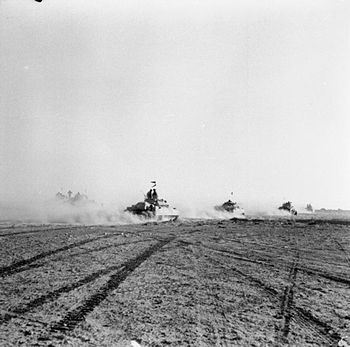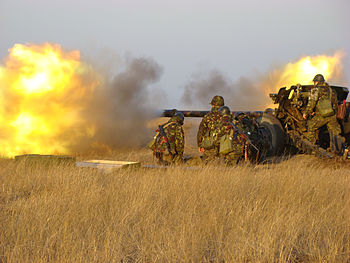
This is the fourth part of my review of The stress of battle: quantifying human performance in combat by David Rowland, which is an essential piece of Operational Research on WW2 and Cold War combat operations. This part covers the findings on anti-tank combat.
Anti-Tank Combat
Unlike small arms, the effectiveness of weapons used for anti-tank combat has changed considerably over the course of the mid-20th century. From non-specialist gunfire in WW1, to high velocity armour piercing in WW2 and then to Anti-Tank Guided Weapons in the Cold War period. This makes the operational research on anti-tank combat harder to do because the start point needs to be battles where only one kind of AT weapon is in action. Much of the analysis on anti-tank combat starts with the ‘Snipe’ action during the second battle of El Alamein in North Africa where data on each of the guns individually was available.
- ‘heroic performance’ plays a large factor in the effectiveness of anti-tank guns
- about a quarter of guns (at most) performed heroically (including those where platoon, company or battalion level officers assisted with firing guns)
| Campaign / Battle | Heroes | Others | ||||
|---|---|---|---|---|---|---|
|
No. Guns in combat |
Total engagements |
Tanks Hit per target per gun engagement |
No. Guns in combat |
Total engagements |
Tanks Hit per target per gun engagement |
|
| Greece (1941) |
8 |
8 |
0.400 |
38 |
44 |
0.054 |
| Alamein (2RB at Snipe) |
10 |
25 |
0.150 |
23 |
27 |
0.048 |
| Medenine (Queens Bde) |
2 |
7 |
0.430 |
22 |
38 |
0.027 |
| Medenine (Guards & NZ) |
6 |
9 |
0.390 |
14 |
14 |
0.120 |
| Total all battles |
26 |
49 |
0.275 |
97 |
123 |
0.052 |
- Â rate of fire is proportionate to target availability (i.e. when there are multiple targets crews fire faster)
- the median point for heroes was 0.3 tank casualties per gun, where for non-heroes it was 0.03 tank casualties per gun
- tanks are less effective in defence than AT guns alone, or tanks supported by AT Guns
- AT Guns with tanks apparently kill three times more tanks than the tanks would on their own
- AT Gun performance is attributed to having a higher concentration of SNCOs and Officers with deployed ATG compared to tanks (about three times as many)
- heroes were disproportionately represented by SNCOs and Officers (at least in terms of who got the medals), in 75% of cases an SNCO or Officer senior to the gun crew commander was involved
- Paddy Griffith is quoted on tank casualties that “relatively few appeared to have been caused by enemy tanksâ€
Overall it shows that the biggest single effect in anti-tank combat was down to leadership. Where gun crews are well lead then they are significantly more effective in battle. This is assuming that the guns in question can have some effect on the tanks that they are shooting at, which was the case in all of the battles examined (including a mix where the guns defended successfully with those where the gun lines were overrun by tanks).
Concluded in Part 5 – Operational Research on Heroism, Shock & Surprise
Related articles












